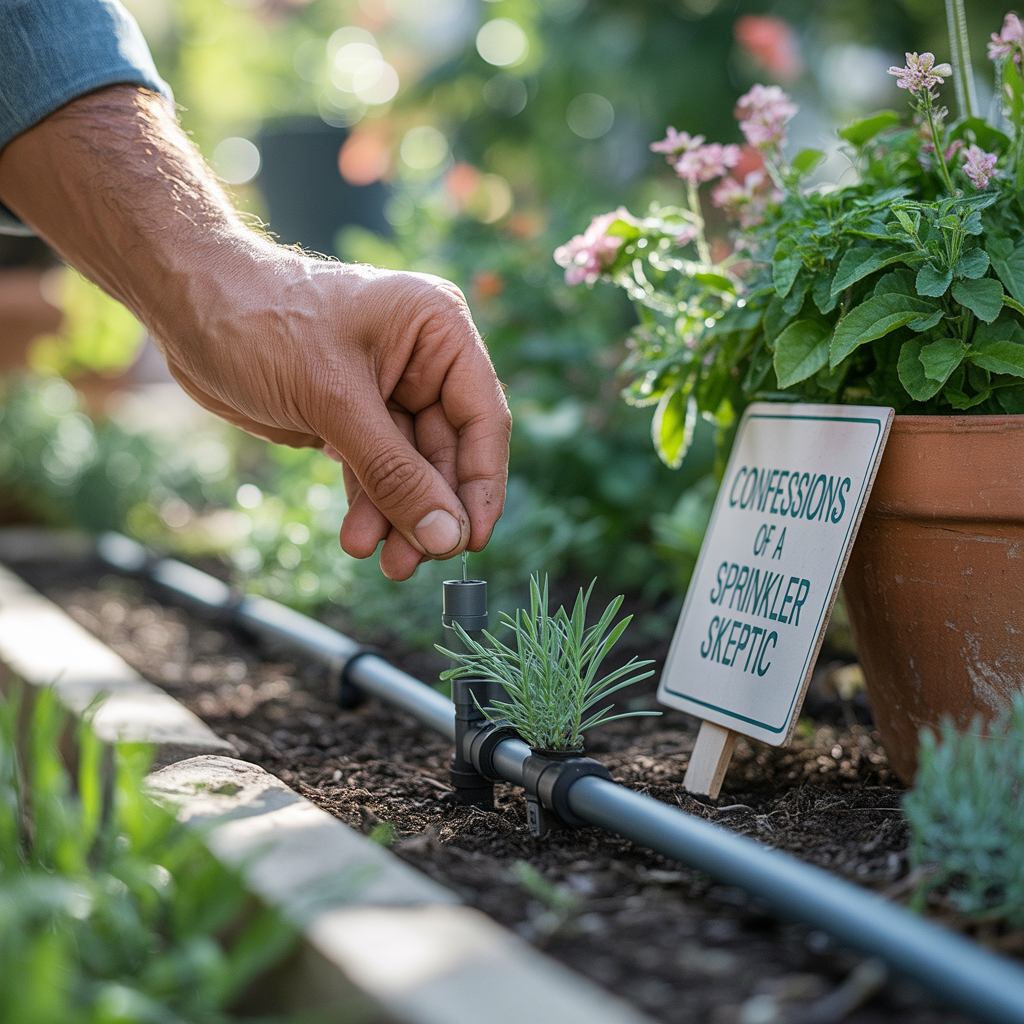- Introduction
- 🌧️ Why Harvest Rainwater for Gardening?
- 🛠️ How to Collect Rainwater for Gardening – The Simple Way
- 🪣 Best Rain Barrels for Home Gardens
- 🌿 How I Water My Garden With Rainwater
- 🧑🌾 Simple Rainwater Harvesting for Small Gardens
- 🌱 Rainwater Irrigation Ideas for Beginners
- 🔧 Install Rain Barrel at Home – Quick Checklist
- 🧠 FAQs – Rainwater Gardening Tips
- 🌟 Final Thoughts
Introduction
Watering my garden used to feel wasteful.
Each time I turned on the hose, I worried about the bill and the planet.
Then I discovered how easy it is to collect rainwater.
Now I water my plants with what nature gives—free, clean, natural water.
Here’s how I set up my DIY rainwater system and how you can too.
🌧️ Why Harvest Rainwater for Gardening?
Rainwater is soft, pure, and plants love it.
Collecting it helps:
- Save money
- Cut tap water use
- Keep plants healthy
- Reduce runoff and erosion
- Make your garden more self-sufficient
It’s one of the best sustainable water practices for gardeners.
🛠️ How to Collect Rainwater for Gardening – The Simple Way
You don’t need a big tank or complicated system.
Here’s how I did it in one weekend.
Step 1: Choose Your Rainwater Collection Spot
Pick a downspout or roof edge where water falls freely.
Step 2: Set Up a Rain Barrel
Use a food-grade barrel or a strong plastic drum.
Cut a hole for water to enter and one for overflow.
Add a screen to keep out leaves and bugs.
Step 3: Add a Tap or Hose
Install a faucet at the bottom.
This lets you fill a watering can or connect a small hose.
Step 4: Raise the Barrel
Put it on bricks or a stand so water flows with gravity.
🪣 Best Rain Barrels for Home Gardens
Here are the options I tried or researched:
- Classic Plastic Barrel (50 gallons) – Cheap and easy
- Foldable Rain Barrel – Great for tight spaces
- Wooden Barrel Style – Looks good in decorative gardens
- DIY Food Drum Barrel – Budget-friendly option
🌿 How I Water My Garden With Rainwater
Once my barrel filled up, I used it like this:
- Filled my watering can in the morning
- Connected a soaker hose for slow drip watering
- Used a gravity-fed pipe for raised beds
- Stored extra rainwater in big buckets
Even a light shower gave me 10+ gallons. That’s enough for days.
🧑🌾 Simple Rainwater Harvesting for Small Gardens
Got a balcony or patio garden? You can still do this.
- Use a small barrel (20–30 liters)
- Place it under a roof drip or gutter
- Let pots collect overflow
- Reuse kitchen rinse water for potted plants
Even a small setup adds up.
🌱 Rainwater Irrigation Ideas for Beginners
Once you collect water, here’s how to use it smartly:
- Use watering cans for control
- Attach soaker hoses to the barrel
- Create drip holes in plastic bottles and bury them
- Make rain gardens to absorb overflow
- Use mulch to keep moisture in
These methods use less water and keep your soil happy.
🔧 Install Rain Barrel at Home – Quick Checklist
Here’s the short version of how I did it:
✅ Choose a location under gutter or roof edge
✅ Get a clean plastic drum or buy a barrel
✅ Add mesh filter on top
✅ Drill faucet hole and overflow hole
✅ Seal with rubber washers
✅ Raise on bricks or wooden stand
Done!
🧠 FAQs – Rainwater Gardening Tips
Q1. Is rainwater safe for vegetables?
Yes. It’s cleaner than tap water and free of chlorine.
Q2. Can I collect rainwater without gutters?
Yes. Place wide bins or use tarps as funnels.
Q3. How long can I store rainwater?
A few weeks if it’s covered and clean.
Q4. Will rainwater attract mosquitoes?
Not if you cover barrels with mesh or lids.
Q5. What if I have limited space?
Use small containers or flexible barrels. Every drop helps.
🌟 Final Thoughts
Collecting rainwater was one of the best choices I made for my garden.
It’s free, clean, and simple. My plants are happier. My bills are lower. And I feel better using what nature gives.
Start with a small barrel. Watch it fill during the next rain. You’ll be amazed.
Your garden—and the planet—will thank you.


